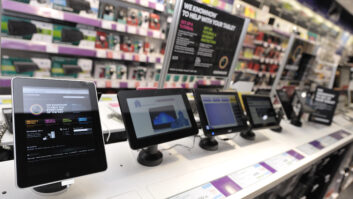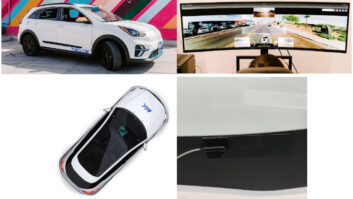Las Vegas — While digital print volume grows, suppliers at the Photo Marketing Association (PMA) annual trade show, held here March 8-11, continued to express alarm that billions of digital images languish unprofitably on computer hard drives.
“There is something like 350 million digital images captured a day – and no one is doing anything with them,” said Rowan Lawson, Kodak kiosk group worldwide marketing manager.
The vast collection of unprinted, and otherwise un-monetized images, was seen as both a failure and an opportunity for an industry still coping with the digital transformation.
While celebrating the success of the digital camera market, which has continued to grow despite predictions of a market downturn, several PMA keynoters urged the industry to focus on what happens after consumers stop snapping.
Women in particular need to be a focus for the industry as they are the principle memory keepers in the household, said Keith Kratzberg, marketing VP, Epson, during his keynote address.
A report by The NPD Group released at the show appeared to confirm Kratzberg’s contention, noting that moms in particular “are a key audience for printing and sharing pictures.”
“While 66 percent of moms surveyed said they were printing snapshots at home, online printing is growing in popularity. Eighteen percent of moms surveyed were ordering their photos online and picking them up in a store, 14 percent were having them delivered to their homes, and 7 percent were doing both at various times,” NPD noted.
To drive more printing, the industry must create an experience where people will pay a premium for commodity items, much as Starbucks did for coffee, Kratzberg said. He pointed to an effort by Ritz Cameras to print customer photos as fine art as one successful example.
“The point is that an enormous number of people will spend money for the right experience,” Kratzberg said.
Photo novelty items and online ordering will figure prominently in that experience, argued Vyomesh Joshi, HP executive VP. The firm’s Snapfish online subsidiary enjoyed a 500 percent increase in the fourth quarter photo book sales and a 400 percent surge in fourth-quarter photo calendar orders, Joshi said.
“We have to use the Internet as the growth engine,” Joshi said. “Snapfish generated nearly 1 billion prints and cards in 2006.” He added that in 2006, half of all the prints in the United States were printed using Snapfish’s infrastructure and more than 100 million photos are uploaded to the Snapfish network each month.
“Major retail partners report more than 90 percent of online orders are picked up in stores,” he said.
Retailers also loomed large in the address of Yoshikazu Aoki Fujifilm photo imaging products GM. Aoki stressed that keeping retailers relevant in the digital age was a core goal for the company. To that end, Fujifilm would promote “new creative photography products and services while allowing our customers to leverage their existing infrastructure. At the same time we’re offering low cost of entry solutions for new-comers to the imaging industry.”
The industry will also profit from the emergence of high definition viewing, argued Sony’s personal mobile and imaging division senior VP, Steve Haber. High-definition viewing “will bring that sense of validation to our life experience through faithful reproduction” of consumer’s images, he said.
Continuing to drive improvements in capture devices will also remain important, Haber noted.
“We want to make cameras in such a way that they can ‘think’ intelligently as well as understand the world they’re capturing,” he said.
Keeping pace with the quick product turnovers while also keeping prices competitive is the core challenge for camera makers, said Nikon president/CEO Michio Kariya. “Digital pictures will play an important role” in an increasingly networked future, he said. This “will open up a wide range of services and opportunities to enjoy, re-experience and share those special moments and memories.”













